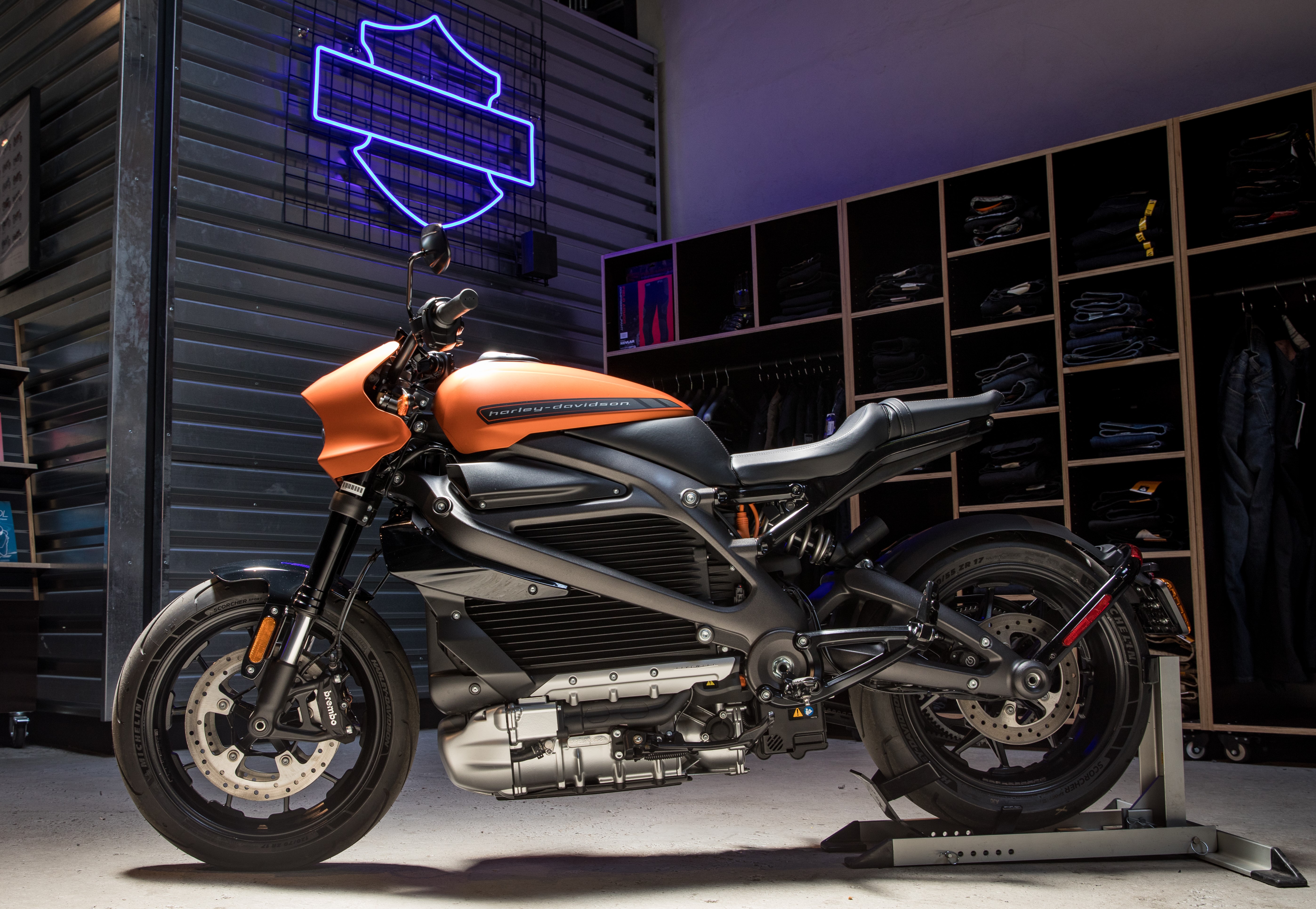Harley-Davidson will release its first production electric motorcycle, the LiveWire, in September.
Yes, the American symbol for internal combustion, chrome and steel is going all-in on two-wheeled EVs.
Founded in Milwaukee in 1903, Harley-Davidson opened a Silicon Valley office in 2018 with plans to add a future line-up of electric vehicles — from motorcycles to bicycles to scooters.
With these moves, HD joins a list of established transportation companies that are redefining themselves in the transformation of global mobility.
TechCrunch talked to the company’s senior management on the EV pivot and got a chance to test the LiveWire on New York’s Formula E race track.
The battery-powered Harley will do 0-60 mph in 3 seconds, go 110 mph and charge to 100% in 60 minutes. It goes for $29,799, MSRP.
The motorcycle’s 15.5 kWh battery and magnet motor produce 105 horsepower and 86 ft-lbs of torque for a city range of 146 miles (and 95 for combined city/highway riding).

In contrast to some of Harley’s minimalist gas motorcycles, the company teched out the LiveWire. The e-moto has five processors to manage performance and app-based connectivity, according to HD’s chief engineer for EV Technology, Sean Stanley.
The LiveWire’s tablet-type dash synchronizes with smartphones and allows for preset and customized digital riding modes. From the dash or a smartphone one can calibrate and monitor the LiveWire’s power output, charge status, traction-control settings and ABS braking characteristics. The EV has navigation capabilities and a Bluetooth system for music, helmet comms and to accept incoming phone calls.
Harley-Davidson is famous for its internal combustion rumble — which warranted a new signature electric sound generated from the LiveWire’s mechanical movements. “We spent a lot of time optimizing it…The sound comes from a combination of the electric motor, the transmission and the drive line,” explained Stanley.
You can power the LiveWire on a home outlet or get your electric motor running to head out on the highway with the same fast-charging networks that power Teslas — such as ChargePoint.
HD is also adding charging stations at its LiveWire dealers and announced a partnership last week with Electrify America to provide new owners 500 kW for free.
Harley-Davidson’s electric shift puts the iconic American company in a position to hedge competition from e-moto startups as it jumps out front as the EV leader among established motorcycle companies.
The major gas names have been slow to embrace production e-motos. None of the big motorcycle manufacturers — Honda, Kawasaki, BMW — offer a street-legal, electric motorcycle in the U.S. KTM introduced its Freeride E-XC off-road motorcycle in 2018 and will soon offer a junior version for the first all-electric Supercross racing class.
Harley’s electric moves come after a period of revenue decline for the company and stagnation in the powered two-wheeler market.
The U.S. motorcycle industry has been in pretty bad shape since the recession. New sales dropped by roughly 50% since 2008 — with sharp declines in ownership by everyone under 40 — and have never recovered.
For the last several years, e-motorcycle startups have worked to produce models that rejuvenate interest from a younger generation, while creating gas-rider converts. In addition to offering more tech features to attract new riders, companies such as California-based Zero have worked to close gaps on price, range, charge times and performance compared to petrol-powered motorcycles. The startup began shipping its 2020 $18,995 SR/F model — a potential LiveWire competitor — with a 161-mile city range, one-hour charge capability and a top speed of 124 mph.
E-moto startup Fuell will debut its $10,995 Flow — with 2.7 second 0-60 speed, 150-mile range and 30-minute charge times — in Europe this year, then the U.S., according to founder Erik Buell.
The biggest distinction between the LiveWire — versus gas motorcycles — is its monster torque and uninterrupted forward movement. The machine has one gear, so there’s no clutch or shifting. With only a battery, processor and drive-train there’s much less that needs to happen mechanically to deliver power from the throttle to the rear wheel. You simply twist and go.
As Harley-Davidson rolls out its adrenaline-inducing LiveWire, there are several things to watch. The first is how the $29,000 price point fares in the market vis-à-vis startup competitors, such as Zero — which are launching comparable, yet less expensive, e-motos. HD’s Paul James (see video) gives LiveWire an edge over Zero on performance attributes and Harley’s service and dealer networks. Sales figures will soon tell if buyers agree.
Harley-Davidson’s EV foray could also create the spark that pushes the gas motorcycle industry toward electric — which would make HD a case of the almost disrupted transportation company becoming the disruptor.
At an event this spring, Harley-Davidson’s VP for Product Marc McAllister stressed the need for HD to remain a premium motorcycle transportation company, while developing products for a more on-demand, urban mobility era.
Harley-Davidson’s LiveWire is a leap in that direction, but the company’s next round of two-wheeled EVs — and the market response — will tell us more about HD’s relevance in the transformation of how people choose to move from place to place.
Source: Tech Crunch Startups | Inside Harley-Davidson’s EV shift with a ride on its LiveWire
No Comments